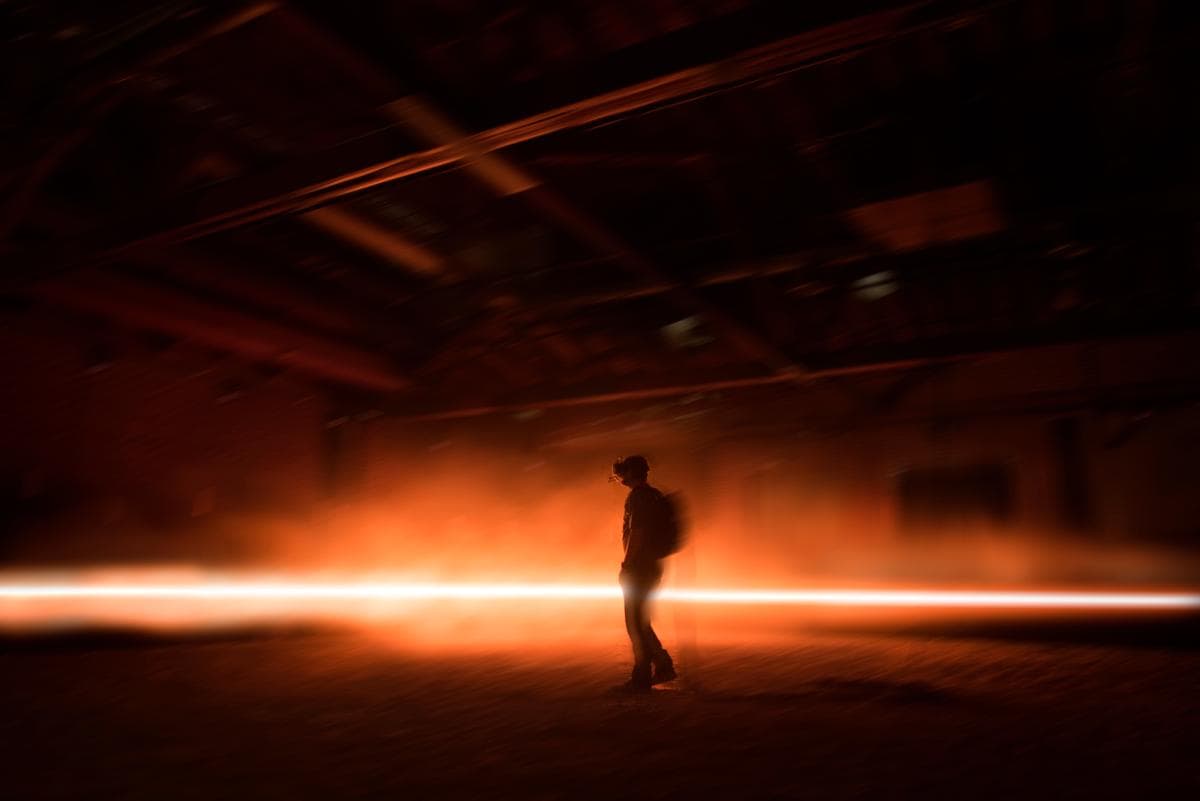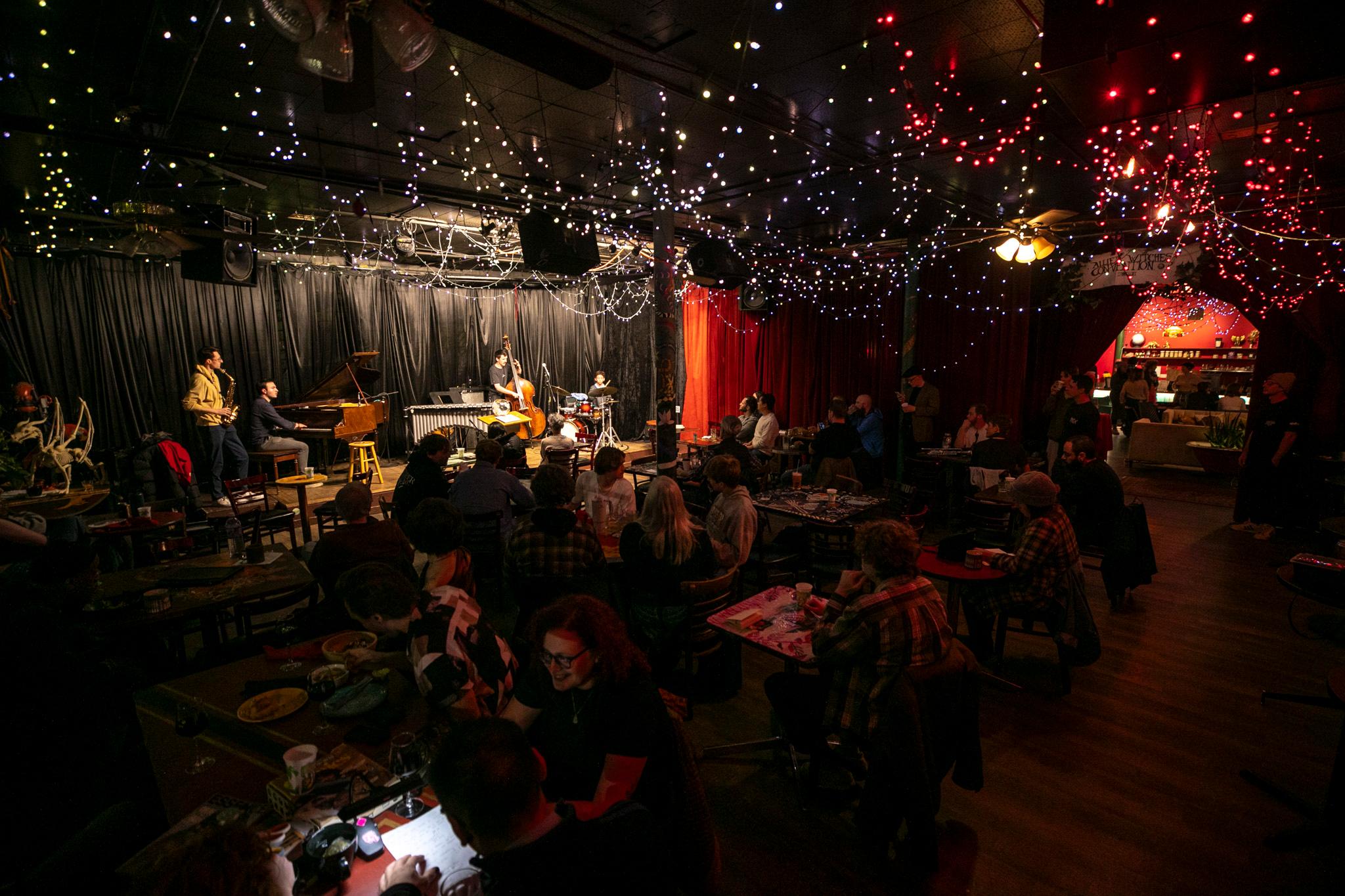Alejandro Iñárritu is a pretty big deal. The Mexican filmmaker has won five Academy Awards for his work conveying human stories through films including Birdman and The Revenant. Now, his latest work is touring the country, starting in Aurora.
CARNE y ARENA (Virtually present, Physically invisible) is a 20 minute virtual reality experience written by Iñárritu and shot by three-time Academy Award-winning cinematographer Emmanuel Lebezki. The experience opened at 2017 Cannes, making it the first VR work included as an official selection in the festival. It has since won several awards, including an honorary Academy Award. Now, the installation is embarking on a multi-year international tour, and Aurora and Montreal are the first North American cities to host it.
Set in the Chihuahuan Desert, the story is based on true accounts of travelers across the U.S. border. Each viewer begins the experience alone, joining a caravan of Mexican and Central American refugees and immigrants. The film weaves together multiple narratives and introduces human characters as you travel through the simulated space.
Presented by PHI Studio, Legendary Entertainment and Emerson Collective with the community support of Denver Center for Performing Arts Off-Center and in partnership with Biennial of the Americas, Denver Art Museum, Latino Cultural Arts Center, Mexican Cultural Center, and Museum of Contemporary Art Denver, the VR installation will be based out of the Hangar at Stanley Marketplace from now through January 2021. The experience has been designed with COVID-19 in mind. Only three visitors experience it at any given time, each in a separate room within an 8,000-square-foot space.
Visitors to the installation walk through a bustling Stanley Marketplace, following signs for CARNE y ARENA. They turn a corner into a dark, quiet space. They can hear the bass from the show as they sign in, go through a temperature check, put on hand sanitizer and sign a waiver.
Visitors then walks alone through a black curtain and enter a grey room lined with benches. Dozens of old shoes covered in reddish dirt are strewn across the floor. A sign tells you that these are actual shoes found at the border. You're asked to take your own shoes and socks off and to place them in a locker. The cement floor is cold. Finally, an alarm and flashing lights tell you it's your turn.
You enter, barefoot, into a dark room with a floor covered in dirt and gravel. A staff member outfits you in your backpack and goggles. As soon as the goggles are lowered over your eyes, you're in the desert.
It's nighttime, quiet. You hear shouts and cries in the distance, cries that get louder as a caravan of people of all ages stumble up to you, some of them moaning and actually collapsing with exhaustion. There's a four year old boy. A man speaks English into a cellphone, presumably coordinating with someone on the other side.
Suddenly there are sirens and helicopters, shouts and lights flashing in your eyes as border patrol cars approach your group, officers screaming at you to get down on your knees, to put your hands up. You're immersed in the terror of that moment, watching members of the caravan trembling, wailing, crying. The story unfolds from there, and you learn each character's personal story -- what's at stake for them, what they left behind, and what they had to endure to get to the border.
"During the making of this project, I had the privilege of meeting and interviewing many Mexican and Central American refugees. Their life stories haunted me, so I invited some of them to collaborate with me on the project," said Iñárritu. "My intention was to experiment with VR technology to explore the human condition in an attempt to break the dictatorship of the frame -- within which things are just observed -- and claim the space to allow the visitor to go through a direct experience walking in the immigrants' feet, under their skin, and into their hearts."
In an artist statement shown to visitors at the beginning of the experience, Iñárritu says that all of the characters are based on real people he'd interviewed and that the experience blends the stories of those people. The intent of the project is to show visitors that refugees are not simply statistics but human beings.
Tickets to CARNE y ARENA are on sale now at denvercenter.org. The show runs at the Hangar in Stanley Marketplace from October 23, 2020- January 30, 2021. For more information, visit carne-y-arena.com.













